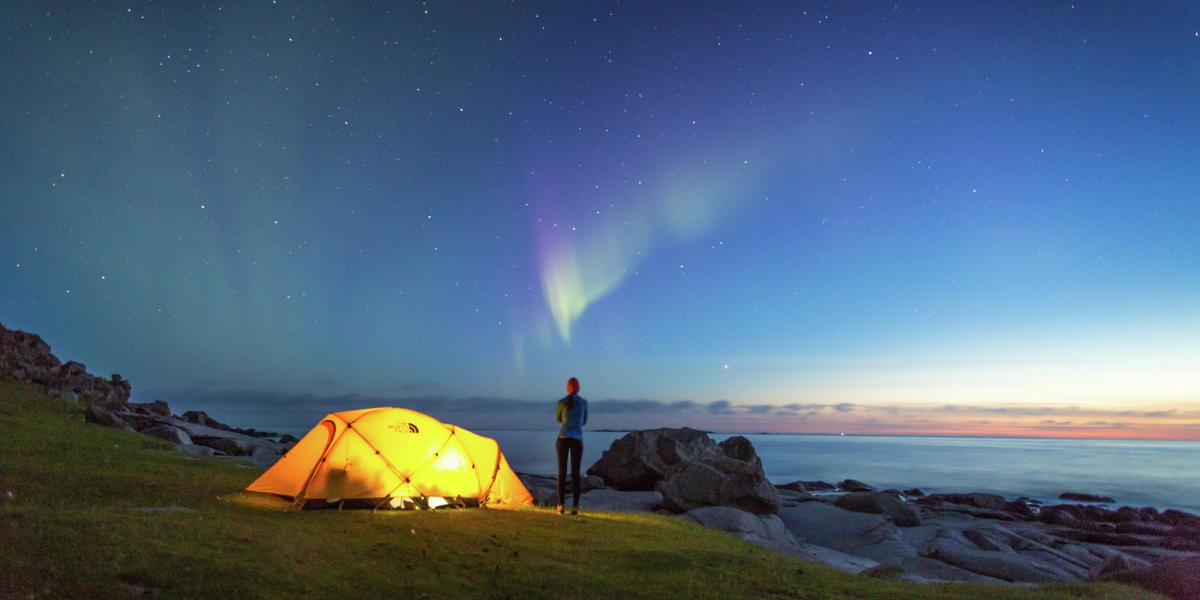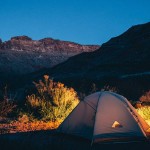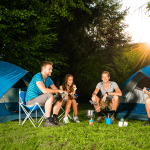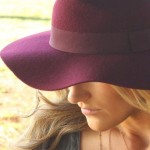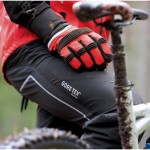
How To Pick The Best Possible Tent According To Your Needs
To enjoy camping and be as close possible to nature, it is best to go out sleeping in a tent. Now whether you are going on your own or with family, and what will be the conditions in which you are going to use the tent are the 2 main factors to take into consideration when buying a tent. You wouldn’t want to feel tight and uncomfortable inside in a tent not suited for the environment and season you’re in! Here is a complete guide to help you avoid that and choose the adequate tent for you.
Three-Season/Four-Season Tents:
Tents can be divided into 3 and 4 Season tents. While both are available in different sizes, design and material, Three-Season tents are better suited for a mild, warm weather, a great tent for summer camping basically. The Four-Season tent on the other hand are more adapted to harsher climates, backcountry style; it will offer protection against the wind and snow and is thoroughly designed to be highly resistant to all kind of difficult weather conditions, winter and summer alike.
“Backpacker” Vs “Family Style”:
The differences between these 2 types are basically the capacity, the overall weight, and the different components and accessories that constitute the tent. What are sometimes called “backpacker” tents are typically light tents, with space for 1 and some models up to 3 people. The “family style” tents as the name suggests have a 4 or +4 capacity, they’re pretty heavy which gave its users the nickname “car campers”.
The Different Styles/Shapes of Tents:
There are three main styles and shapes.
- Dome/Igloo: This is a rounded tent with an external framework that serves as an entrance. Such tents are extremely light and rather small, and can be backpacked while hiking in elevated spaces. They offer thus protection against wind and the rain. They are also pretty simple to set up.
- Pyramid/Teepee: Less common than the dome, pyramids have usually a center pole that enables the tent to reach a high peak with a high-pitched roof that will rain and snow. Some models feature vertical walls from the base up to the point where they dwindle to the peak.
- These are the more voluminous spacious type of tents, with a structure resembling that of a house. Some models have also different compartments inside. Other features include vertical walls, high ceiling, and emplacements to set up stoves, cots….
Important Factors To Consider:
- Floor Space: Square footage or the length-x-width measurements don’t reveal a clear picture how spacious and comfy is a tent exactly. There’s the angle of the walls rising from the floor to consider as it may make you closer to the edges with uncomfortable contact with the sidewall. You have also to take into the consideration the space allowed to the vestibule and the stored gear in regards to the sleeping space. The standard measurements for a 1-2 capacity tent is about 20 square feet space per person; 3 to 6 person tents while they do have notably more space for storage, they have most often smaller sleeping space, 15 to 17 square feet available for each person. The sleeping configuration is also a factor to consider, depending on the shape of the floor, 2 people can sleep inside the tent either in a shoulder-to-shoulder or a head-to-feet configuration.
- Peak Height: This is the height between the peak of the tent to its bottom. Domes and teepees have the peak in the center but there are others with the peak to the side. In any case backpackers have enough space to sit up but not to stand. Bigger tents can have a single spot where you can stand and others provide the possibility to walk around no problem. Vertical tent walls are useful in this sense.
- Roof & Walls: The roofs/panels are generally made of fabric and mesh. The material gives the tent a waterproof feature and a certain degree of protection against the sun. 3-season tents are the type that incorporate mesh to the fabric, which is great for ventilation but requires a rainfly for interior protection. The 4-season tents are instead made exclusively of fabric, which gives more solidity to the tent. These fabrics are customarily polyester, nylon, and polyurethane-coated nylon, among some other similar material. The very light tents use some kind of synthetic fabrics that are rather breathable like the Gore-Tex for example. The walls on the other hand are in many cases made from canvas, a material known for its efficient breathability although it needs an extra coating to protect the walls from water. Some additional features include tents with windows protected with mesh or polyethylene; there are also tents with light-colored panels, which makes the interior brighter. Note that a darker panel gives more inside warmth.
- Tent Floor: Tents should be avoided to be pitched on a rough surface as it wears the floor down. Floors are chiefly made of the lightweight nylon, oxford (nylon or polyester enhanced with waterproof and durable fibers, which is good for installing tables, cots…), the no-less water-resistant polyethylene (although it is a heavy material, inconvenient for packing), and finally vinyl, which is the material par excellence for the wilderness as it is potently resistant to water and sturdy, although it is also heavy and doesn’t allow a small packing.
- “Bathtub” Vs “Perimeter” Floor Construction: Tent floors are either made in a bathtub or perimeter fashion. Bathtub as the name suggests are somewhat of a pan-looking design with a short sidewall on the edges of the floor. Look out for how the edges are constructed or cut as they may limit the floor space available. Perimeters, aka catenary style display a seam at the edge which gives a tight feature. There are models that combine both floor styles, with a bathtub style along the side panels and a perimeter style at the entrance.
- Footprint Tarp Vs Ground Cloth : Ground cloth has the notable flaw that if it is extended further than the lower edge of the tent panels, it will create a wet floor as it would allow water to run down the tent. The “footprint” tarp is usually sold independently from the tent but is designed to be of the exact same shape as the tent floor, and a little smaller so it wouldn’t overlap the edges. A lightweight ground cloth/tarp can serve the same purpose provided it doesn’t reach beyond the side panels. If you are more of a DIYer, you can create your own footprint with some waterproof fabric like canvas tarp or nylon ground cloth. You should know that it is recommended to prefer ground tarp as it is more efficient in keeping a dry surface.
- Tent Poles: The poles/tubes are what maintains the shape and the structure of a tent. They are made to be flexible and robust. The shell of the tent lets the poles through via sleeves or clips across the body of the tent. Sleeves provide more strength while clips are used for better ventilation between the rainfly and the tent roof. These poles are normally made of steel, which is robust and heavy but corrodes with time (the older kind of poles), aluminum, the current standard thanks to its durable, lightweight, and strong characteristics, they are also well appreciated for its environmental friendly production process. Other pole materials include fiberglass, more durable but not as solid as aluminum, and carbon fiber, the material preferred for lightweight backpackers. Tent poles can be color-coded so as to recognize which goes with which sleeve. Some are also hubbed, that is they are connected through a hub that would join the two poles at a crossing point meant by the design. Such hubbed poles make the tent more stable and are more convenient to set up.
- Tent Fly: It is a panel covering the tent that offers added protection against weather elements. The fly can either cover only the roof or coat the tent fully, acting like a shell. The partial fly is used to protect only the top of the tent, especially if the top is made out of mesh. A partial fly allows for more ventilation and light going to the inside and let you make use of the windows if there is any. The panels are therefore exposed to the elements and have to be sealed with a seam. The full fly on the other hand is basically a fabric shell used for maximal protection. While some models feature well-placed openings for ventilation, the majority of full flies just allow for door entrances, no windows. Those tents with a great amount of mesh in the fabric are the ones that usually make use of a full fly. Please note that to prevent any risk of moisture, the full fly has to extended down to the lower end of the shell so that water could not flow down under the tent.
- The Ends/Tips of Tent Poles: The tip of the pole fits into a grommet/anchor point strap in critical spots so as to secure the tent into the ground. Other tents use instead a ball cap on the end that connects to a socket. Ball caps are more adapted to windier conditions.
- Vestibules: It is an additional space that is either situated at the entrance, acting like a mini covered porch basically, or inside the tent as extra space for storage.
- Windows: The windows, if there are any, are typically covered in insect netting and allow you to have an outside view as well as a ventilation portal. If the mesh that constitutes the window is smaller, it will allow less air through. There are some models who feature a clear poly sheet which gives a clear view but lets no air through. A tent with a full fly may dispose of mesh windows to allow for more ventilation, although you can’t use them for outside viewing while using the full fly at the same time.
- Accessories: You normally find in each tent fabric pockets used for storage. They can be sewn across the seams or suspended in the ceiling by a hook. Additionally, you can find some tents disposing of loops to use as clothes lines; you also find other hooks used for hanging lights.
- Additional Tips: As already suggested in the article, you have to take into consideration the weight of the tents by taking into account where are you gonna camp. Consider also the expected weather conditions. Furthermore, be aware of the difficulty of setting up the tent, it can range from the immediate pitching to more elaborated and complex installation. Finally, there’s obviously your budget limiting you, so do your homework before taking any decision; hopefully this guide will have helped you in that.

